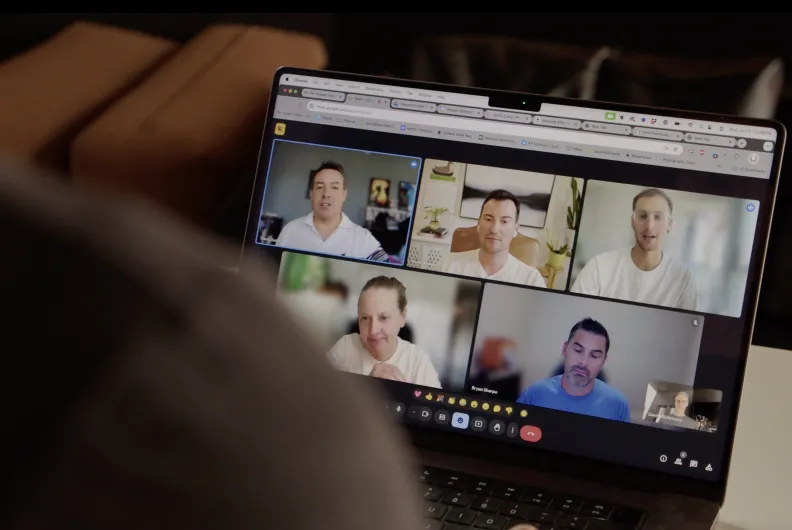Beyond the Screen: Crafting a Remote Culture That Truly Connects
At ImageX, remote work forms the foundation of how we succeed together.
The rise of remote work has really reshaped what it means to build a team. It's no longer about who sits next to you but about how connected you feel to the people, mission, and culture of the company, regardless of where you are in the world. At ImageX, we’ve embraced a fully remote model for almost 5 years. Throughout this time, we've learned that fostering a successful remote culture doesn’t happen by chance. It takes planning and heart.
Here's how we've shaped a remote-first culture that’s rooted in autonomy, connection, and care, and why we believe it's the future of work.
1. Design for Connection, Not Just Convenience
It’s true, remote work can feel isolating at times. That’s a real thing. But we’ve learned that with intention, effort, and a genuine commitment to connection, those feelings don’t have to take over. We create opportunities to come together, through our Global Summit and regional co-working days, because nothing truly replaces the energy of being face to face. It’s about recognizing the challenges, leaning into what works, and building something meaningful together.
Our Annual Global Summit is a cornerstone of that philosophy. Once a year, we bring the entire ImageX team together in person. It’s a time to step away from our screens and into real-life relationships—sharing meals, brainstorming face-to-face, and building bonds that carry us through the rest of the year. These aren’t just team-building exercises—they're trust-building ones.
In addition to the Summit, we encourage and support regional co-working meetups. Whether it’s two team members in Brazil or five in British Columbia, we offer flexibility and support for small in-person gatherings throughout the year. These meetups reinforce our shared culture while allowing local relationships to flourish.
Even day-to-day, we look for ways to spark informal connection: casual coffee chats, “meet your teammate” intros in Slack, or simply checking in at the start of a meeting. These small rituals matter—they humanize the digital experience.
2. Empower Teams Through Autonomy and Accountability
Remote work thrives in cultures where trust is given freely, not earned over time. At ImageX, we hire people we trust—and then we give them the autonomy to own their work.
That autonomy starts with flexible schedules. We recognize that people have different peak productivity hours, family commitments, and life rhythms. While we keep an eye on time to help projects run smoothly, we don’t see it as the only measure of success. What matters most is delivering great work and supporting each other along the way.
But autonomy doesn’t mean isolation. We combine flexibility with clear accountability frameworks—defined goals, regular check-ins, and shared visibility into our progress. Tools like Asana help us stay on top of projects, while Harvest provides transparency into how time is spent. These tools empower our team to stay aligned while working independently.
The result? A culture where people feel both trusted and supported. Where expectations are clear, and success is shared.
3. Use Tech to Support People, Not Replace Them
In a remote world, technology is the connective tissue of your culture. But tech should be an enabler, not a replacement for real human connection.
We curate our tools carefully to minimize digital noise and maximize clarity. Some of our go-to tools include:
- Slack: For quick conversations, team updates, and organic chatter (yes, there’s a pet photos channel).
- Meet: For live meetings, workshops, and one-on-one connections.
- Asana: For task management, team visibility, and keeping projects moving forward.
- Loom: For async video updates, demos, and walkthroughs—perfect for cutting down on meetings.
- Jira: For tracking tasks, managing sprints, and keeping projects on schedule.
- Basecamp: For team alignment, centralized documentation, and project communication.
Each platform has a purpose. Together, they help us bridge time zones and communication styles, making our collaboration fluid and inclusive.
But beyond tools, we create digital rituals like weekly team huddles and leadership AMA sessions, to keep the human element front and center.
4. Nurture Culture from the Inside Out
A strong culture isn’t created by leadership alone but is shaped by every member of our team. At ImageX, we believe culture should be experienced, not just documented in a handbook.
Our Culture Club is one way we put that belief into action. This group is made up of team members from all over the world, representing every region where we operate. With them, they bring creativity, inclusivity, and joy to our workdays through thoughtful initiatives—from monthly trivia and wellness challenges to themed Slack days and celebrations of global holidays. These programs are designed by team members, for team members, ensuring everyone has a voice and a way to shape our shared experience.
We also actively cultivate psychological safety. It’s not a one-time initiative but a constant priority for us. We encourage asking for help, sharing feedback, and speaking openly, whether through structured 360 degree reviews or anonymous employee surveys. We ask, we listen, and we act whenever we can. Our goal is to make sure everyone feels safe celebrating wins, sharing ideas, and learning from mistakes.
When people feel included, appreciated, and empowered, culture flourishes. And when culture flourishes, so does the work.
5. Make Remote Sustainable for the Long Haul
Remote work began as a response to a moment, but it has evolved into a long-term strategy. For it to succeed, sustainability is essential.
That means protecting our team’s well-being and work-life balance. At ImageX, we don’t glorify overwork. We encourage our team to unplug during vacations, take breaks during the day, and set healthy boundaries with notifications. Leadership models this behavior, sending a clear message: rest is productive.
We also recognize that not every remote worker has the same setup. We’ve offered ergonomic training in the past and continue to provide support when specific tools or equipment are needed to help our team do their best work. Our goal is to make sure everyone has access to what they need to feel comfortable, productive, and supported—both physically and mentally.
As highlighted in an article we wrote for Talkspirit, long-term remote success depends on mutual trust, aligned values, and a sense of belonging. That’s why we invest as much in our people as we do in our processes.
Because ultimately, culture isn’t a static thing. It’s a living ecosystem and in a remote setting, it must be nurtured with even more care.
The Future of Work Is Already Here
At ImageX, the question isn’t whether remote work is “working,” but how we can keep improving it. Every tool we introduce, every policy we evolve, and every touchpoint we create is about one thing: building a workplace where people feel connected, empowered, and proud of what they do.
We may be remote, but we’re not distant. We’re global, but we’re tight-knit—something this year’s Global Summit made clear. [Watch the highlights.] And we’re building a culture that reflects the best of both worlds.








